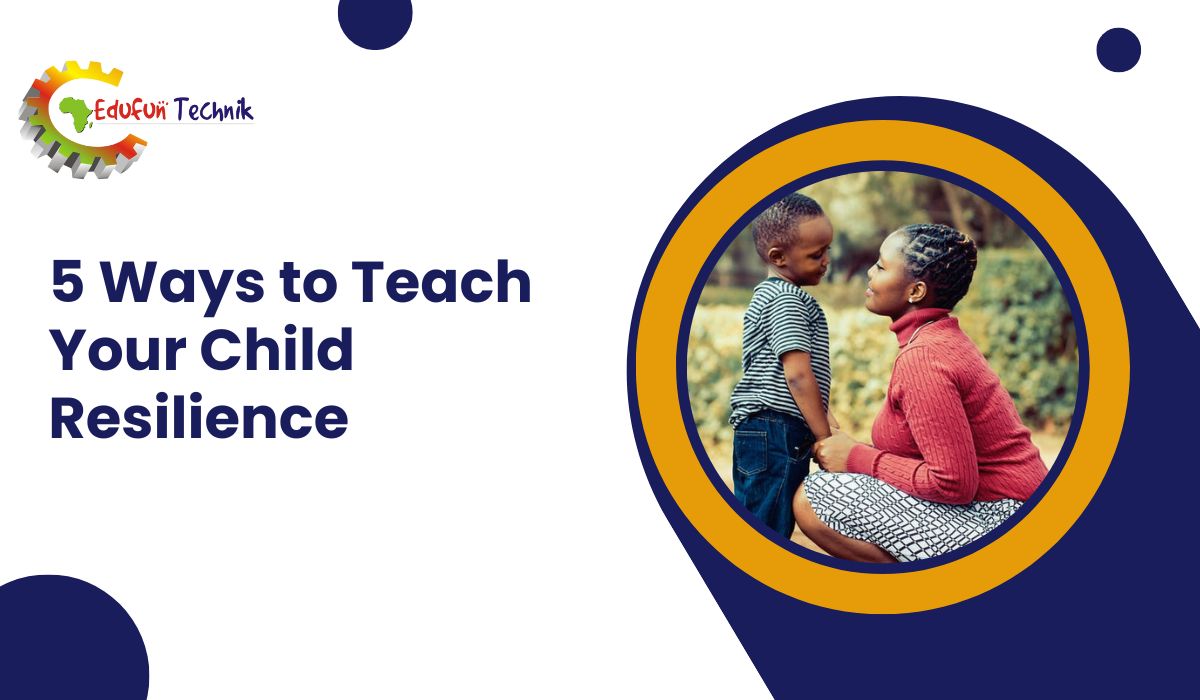Ever watched your child’s face fall after losing a game or not getting that special role in the school play? It’s a natural part of growing up to face challenges and setbacks. But what if your child could bounce back from these experiences, learn from them, and come back stronger? That’s resilience.
Resilience is the ability to adapt to difficult situations and keep going even when things get tough. It’s a crucial skill for children to develop, as it helps them navigate the inevitable bumps on life’s road.
Here, we’ll explore practical tips to help you, as parents and educators, nurture resilience in the amazing children you care for. We’ll delve into fostering a growth mindset, encouraging problem-solving skills, and teaching healthy ways to manage emotions.
Fostering a Growth Mindset
Many of us grew up hearing praises like “You’re so smart!” But what if we shifted our focus to effort and progress? This approach teaches children that their abilities aren’t fixed – they can develop and improve with hard work and dedication.
To plant the seeds of a growth mindset in your little ones, try to reframe challenges. Instead of saying, “This is too hard,” try, “This is challenging, but I can learn to do it!” Replace “I can’t” with “I can’t yet.” This simple shift teaches children that with effort, they can overcome obstacles.
By fostering a growth mindset, you’re equipping your child with the belief that they can handle challenges and keep growing, no matter what life throws their way.
Building Problem-Solving Muscles
Problem-solving skills are like mental muscles – the more they’re exercised, the stronger they become. Let your child explore and experiment in safe settings. This could be through building with blocks, creating art projects, or playing pretend. As they encounter challenges, like a tower that keeps falling, they’ll start figuring out solutions on their own.
To help them develop this skill, ask empowering questions always. Instead of jumping in and fixing things, guide your child by asking open-ended questions. For example, “What do you think happened to the toy?” or “What are some ways you can fix this?” This helps them develop critical thinking skills and problem-solving strategies.
By equipping your child with strong problem-solving skills, you’re giving them the confidence to tackle challenges head-on and find creative solutions throughout their lives.
Learning Techniques for Healthy Emotional Regulation
From frustration over a homework assignment to disappointment about a missed playdate, our children experience a wide range of emotions. Helping them navigate these feelings in a healthy way is crucial for building resilience.
The first step to help children regulate their emotions is to create a safe space where your child feels comfortable expressing their emotions. Let them know it’s okay to feel sad, angry, or frustrated. Also, teaching calming techniques like deep breathing exercises, mindfulness activities, and even simple stretches can help children manage strong emotions. Practice these techniques together when things are calm, so they have tools readily available when faced with a challenge.
Remember, emotional regulation is a skill that takes time and practice to develop. By creating a supportive environment, offering guidance, and teaching healthy coping mechanisms, you’re helping your child build the emotional resilience they need to navigate life’s ups and downs.
Tiny Steps, Big Impact
Our children are constantly on the go, encountering new experiences and a rollercoaster of emotions. This is actually the perfect training ground for building resilience.
Imagine narrating your children’s day, putting words to their feelings. “You seem frustrated with that button that won’t cooperate,”. This simple act helps them understand and manage their emotions, a crucial first step in handling challenges.
We often praise achievements, but for our children, the effort is just as important. “Wow, you kept trying to put on those tricky shoes all by yourself!” This kind of praise fosters a growth mindset, teaching them that perseverance pays off.
Encourage Reading and Story-telling
Stories aren’t just for entertainment; they can be powerful tools for building resilience in our children. Imagine bedtime stories where the characters face challenges, just like our children might. Seeing these characters overcome obstacles and emerge stronger is inspiring! Look for books with relatable characters and problem-solving strategies.
Many children’s stories showcase characters brainstorming solutions and overcoming difficulties. Encourage discussions and how our child might apply them in real life. Some stories even leave the ending open-ended, prompting reflection. This is a golden opportunity to talk about different ways to handle situations and explore the concept of resilience together.
Seeking out books that celebrate our children’s heritage can be particularly impactful. These stories can provide a sense of identity and belonging, which contributes to overall resilience.
Raising resilient children isn’t about creating a world without challenges – it’s about equipping them with the tools to navigate those challenges with confidence. Remember, resilience-building is a journey, not a destination. There will be setbacks and stumbles along the way, but by creating a supportive environment and offering consistent encouragement, we’ll be helping our child develop the strength and perseverance they need to thrive.







